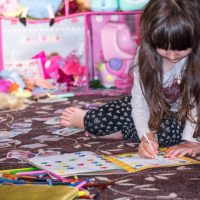“It does not matter how slowly you go as long as you do not stop.”
– Confucius
Potty training is an important stage for your child, marking the beginning of Big Boy/Girl status.
The key to potty training success is to create a positive experience that is motivating for your child and show great patience. Each child is unique and different.
Some ideas work with some but not with other children. Whether your child is developing typically or has a diagnosis such as Autism, these evidence-based strategies can help you accomplish this job well.
https://www.ncbi.nlm.nih.gov/pmc/articles/PMC2529421/#b3-pch13201a
American Academy of Pediatrics and the Canadian Paediatric Society suggest that TT may commence between 18 and 24 months of age, parents should be informed that TT is a complex skill integrating physiological and behavioural processes

1.Potty Training-Are you both ready?
- Can your child sit on a potty/toilet?
- Does she/he stay dry for up to two hours?
- Is he/she uncomfortable when the diaper is soiled?
- Can your child pull pants up and down?
- Is your child following simple instructions?
- Does your child imitate peers or older siblings?
- Is he/she interested in using the toilet /flushing or wearing underwear?
- If you answered mostly yes, your child might be ready. If you answered mostly no, you might want to wait or you can go ahead and still start …
- Are you ready, as well?

2.Before starting Potty training…
- Prepare to use simple and clear language.
- Start by checking the state of his/her diaper or pants(record -will help you know when he’s likely to urinate) every hour or so and label when he is wet or dry. ( help your child understand and learn what’s happening)
- Buy a good supply of cloth underwear –to use daily
- Identify high motivators and reinforcers to use as a reward with your child for sitting or having success on the toilet. You may use a rewards chart ( and stickers), treat, toy/activity depending on what motivates him. Whatever you decide to use as a REWARD, use it for Potty Training only in order to remain motivating.
- Have your child observe other children (family) using the bathroom, too or use a social story or song(such as the one posted below). Social stories are great learning tools as children learn faster and relate better when seeing another child modelling behaviour or skill.
- If he has a favourite doll or stuffed animal, use it to play “potty,” demonstrating again how the potty is used.
- Keep a data sheet and store it in the bathroom- helps you track your child’s progress.
- May use a potty training visual schedule (see below) to show the sequence of steps involved –great visual cue for all kids
(May choose to start by having your child sit on the potty at specific times during the day, such as first thing in the morning, after meals or snacks, before and after naps and at bedtime)
3.Potty Training Data Sheet
Why keep a data sheet?
- To learn the times of day your child is most likely to void ( compare days and times )
- Helps keep track of the progress each day to understand where your child is in this process ,e.g: maybe you need to slow down and work more on some educational materials or modelling to increase awareness and connections (social stories )
- Assists you in evaluating what you can change in your approach based on the outcomes
4.Potty Training Challenges
What to do:
Make potty training part of the daily routine and set expectations clearly; give the warning to help the child prepare for the transition and be consistent (e.g: 5 more minutes to play, then potty time”)
If transitioning is difficult, may use rewards for transitioning
Child afraid/refuses to sit on the toilet or potty
What to do:
- May allow to sit with clothing at the beginning
- Sit with seat covered
- Model sitting, may use a doll
- Add physical support
- Use a song/timer to indicate when is ending
- Rewards for sitting on the toilet
The child sits but never voids in the potty
What to do:
- Be patient, allow time for your child to learn at his own pace
- Keep it positive, use highly rewarding things to motivate your child to perform
- Go over the signs of readiness to evaluate if there are more signs of “not ready” than ‘ ready”; if that’s the case, slow down a bit and go over more prep learning activities. These could be role-playing using a toy, observe siblings, social story or song about POTTY
5. More Potty Training Tips:
- Be patient.
Potty training is a process that can take several weeks (or months for some).
- Make potty training a positive experience
Do not punish, force him to sit on the potty or get angry when accidents happen. This can result in your child’s reluctance to listen and he can develop a lack of self-confidence. Praise your child for trying and successes.
- You may increase fluid intake to give your child the opportunity to succeed.
- Hands off the toilet seat
It is very common to see children placing their weight on their hands when sitting on the potty. This will tense the body and make the release of the bowel movement harder. It is best that your child takes hands off the toilet; you may give him a toy or a book. Encourage sitting for 2-5 minutes at a time.











